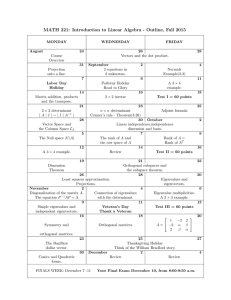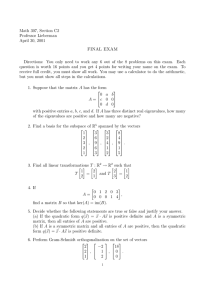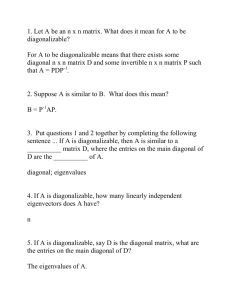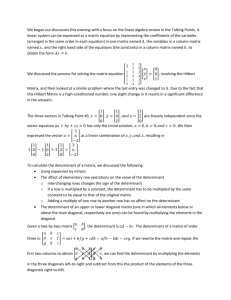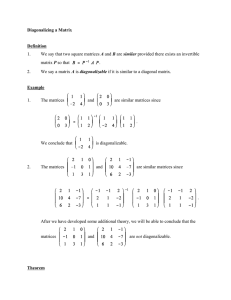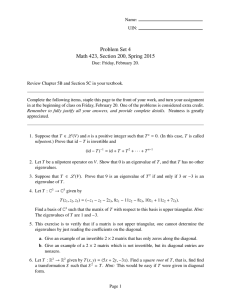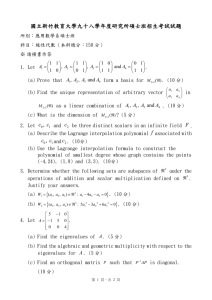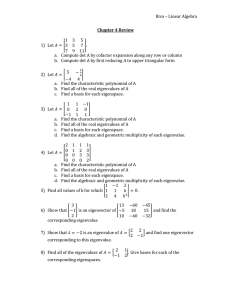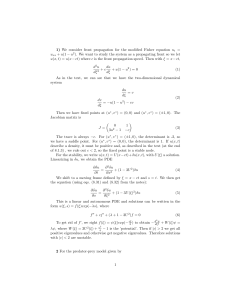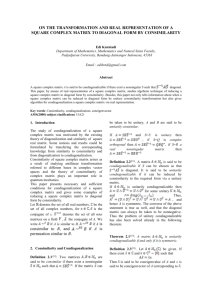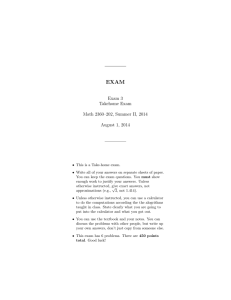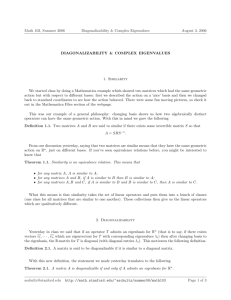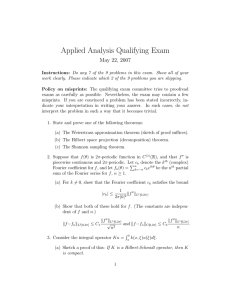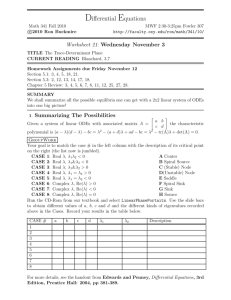Chapter 4
advertisement
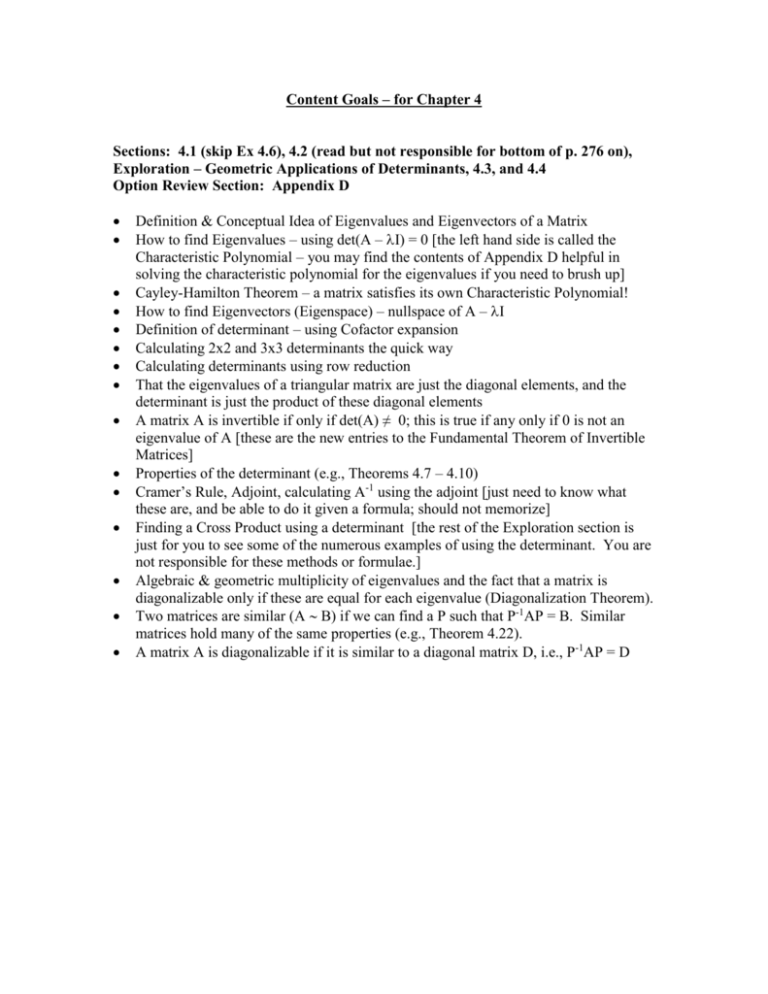
Content Goals – for Chapter 4 Sections: 4.1 (skip Ex 4.6), 4.2 (read but not responsible for bottom of p. 276 on), Exploration – Geometric Applications of Determinants, 4.3, and 4.4 Option Review Section: Appendix D Definition & Conceptual Idea of Eigenvalues and Eigenvectors of a Matrix How to find Eigenvalues – using det(A – I) = 0 [the left hand side is called the Characteristic Polynomial – you may find the contents of Appendix D helpful in solving the characteristic polynomial for the eigenvalues if you need to brush up] Cayley-Hamilton Theorem – a matrix satisfies its own Characteristic Polynomial! How to find Eigenvectors (Eigenspace) – nullspace of A – I Definition of determinant – using Cofactor expansion Calculating 2x2 and 3x3 determinants the quick way Calculating determinants using row reduction That the eigenvalues of a triangular matrix are just the diagonal elements, and the determinant is just the product of these diagonal elements A matrix A is invertible if only if det(A) ≠ 0; this is true if any only if 0 is not an eigenvalue of A [these are the new entries to the Fundamental Theorem of Invertible Matrices] Properties of the determinant (e.g., Theorems 4.7 – 4.10) Cramer’s Rule, Adjoint, calculating A-1 using the adjoint [just need to know what these are, and be able to do it given a formula; should not memorize] Finding a Cross Product using a determinant [the rest of the Exploration section is just for you to see some of the numerous examples of using the determinant. You are not responsible for these methods or formulae.] Algebraic & geometric multiplicity of eigenvalues and the fact that a matrix is diagonalizable only if these are equal for each eigenvalue (Diagonalization Theorem). Two matrices are similar (A B) if we can find a P such that P-1AP = B. Similar matrices hold many of the same properties (e.g., Theorem 4.22). A matrix A is diagonalizable if it is similar to a diagonal matrix D, i.e., P-1AP = D
